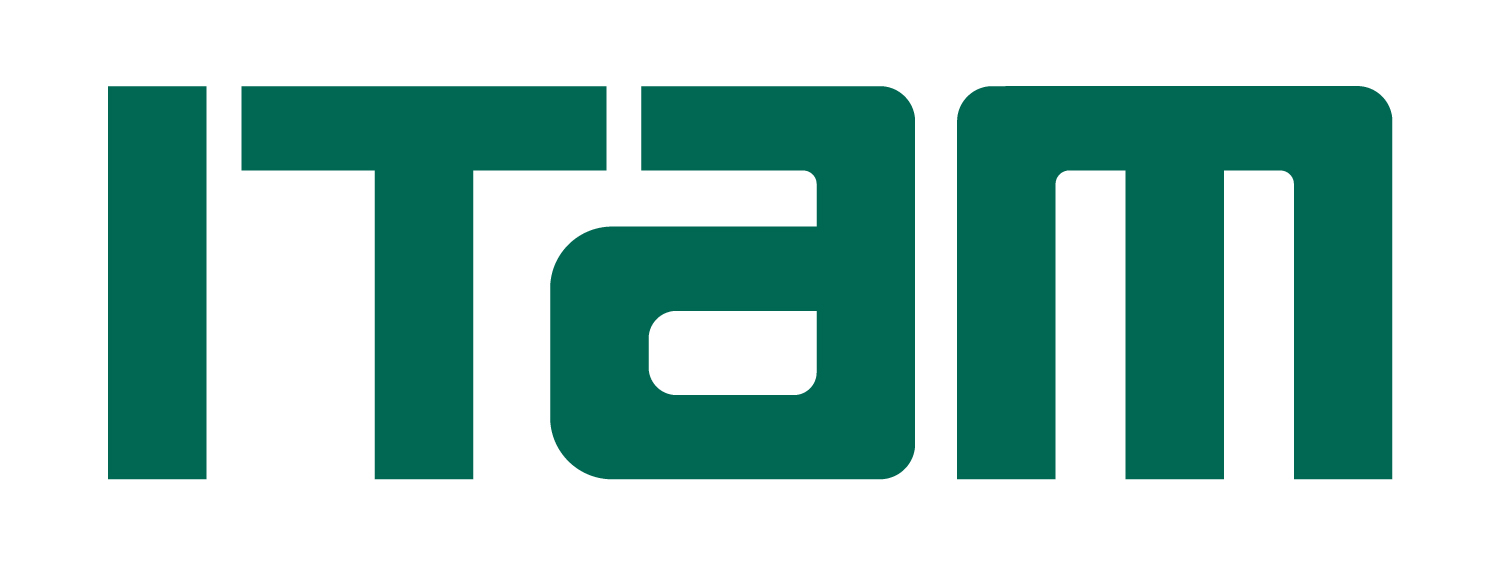Felicitamos al...
XXV Aniversario de Ingeniería en el ITAM
Technological Networks: From Empirical Laws to Theory
Dr. Stephanie Forrest, University of New Mexico, 27 de Octubre 2008 de 13:00 a 14:30 horas, Sala de Conferencias, Río Hondo
Technological networks are essential to modern society, and the security of these networks depends in large part on their connectivity and dynamics. How do these properties scale with network size? Are there general principles underlying the growth and structure of technological networks? If such organizing principles exist, what do they tell us about security, efficiency, and stability as the networks grow? The talk explores these questions in the context of three example computational networks: Social networks on the Internet, the Border Gateway Protocol, and clock tree networks on computer chips.
T-Network for Small and Medium-Sized Enterprises
Dr. Martin Michelson, Hochschule Darmstadt, Departament of Information Science, 17 de Octubre de 2008 de 13:00 a 14:30 horas, Sala de Conferencias Río Hondo
The German Government has established a program "Information society 2010 - Perspectives for the IT-location Germany". In December 2006 the first so called "IT-summit meeting" took place with eight working groups being established consisting of high representatives of politics, business and science to find out which activities would be successful to promote the IT-location Germany. On the annually recurring IT-meetings of the government - the next will be in December 2008 - they present the results of their work and give recommendation for the government's politics. One of this working group deals with the improvement of IT-applications in Small and medium sized enterprises (SMEs). Members of the working group are major companies from the IT-industry, telecommunication, management consulting and scientific institutions including the Darmstadt University of Applied Sciences. A project group of the university's information science and computer science departments developed a concept and a prototype of an IT-network aligned to link existing support offers and to give SMEs assistance in finding the partners and solutions for their IT-demands. The presentation describes the approach, the survey, the concept and the prototype of the network.
The Globally Integrated Enterprise
M. Sc. Alma Rosales, IBM Executive on Loan, 12 de Septiembre de 2008, 18:00 a 19:30 horas, Sala de Conferencias Río Hondo
We will discuss the emergence of a new corporate model – the globally integrated enterprise. We will show how multi-national companies can capitalize on the forces of globalization to create flatter, more efficient operating models, while at the same time build new capabilities to drive profitable growth. This new model has implications for how companies will run and operate global supply chains. Fundamentally, it's shifting the focus from simply managing the supply chain for greater efficiencies to leveraging it to drive revenue. Success for supply chain leaders in today's business environment is about anticipating the needs of the business and responding seamlessly, globally with unprecedented speed and flexibility.
SOA: Myth or Reality
Dra. Romelia Flores y Dr. Kerrie Holley, IBM 5 de Septiembre de 2008 13:00 a 14:30 horas, Sala de Conferencias Río Hondo
This presentation will address several questions. Is SOA Dead? Have we entered what Gartner describes as the trough of disillusionment? What are other companies doing? Is anyone getting value from SOA? If so how are they starting and what are they doing? Some best practices will be presented along with a framework for how companies are getting started and creating value. Lastly the notion of SOA as a nirvana for software engineering will be discussed.
Approaches for creating SOA solutions
Dra. Romelia Flores y Dr. Kerrie Holley, IBM 5 de Septiembre de 2008 17:00 a 19:00 horas, Sala de Conferencias Río Hondo
This presentation will describe an approach to gathering business and technical requirements for creating SOA based solutions. We will review and provide an in-depth view of a client project which leveraged the approaches described. We will review the deliverables resulting from this project and give a feel for the iterative nature of SOA based design. In addition, we will demonstrate the results of the solution created with this client.
Hacia la tecnología 2020
Dr. José Blakeley, Microsoft 28 de Agosto de 2008 19:00 a 20:00 horas, Auditorio Rio Hondo
50 years ago organizations employed armies of people as keypunch operators converting information on paper into digital form to be consumed by the emergent computer. The mainframe reduced the process time for operations such as payroll and order processing from days to a matter of minutes. These gains were so dramatic we could justify to pay scores of humans to prepare information for consumption by the machine. Today the cost of acquiring and storing raw information is trending towards zero. The majority of recorded information is born and captured in digital form - even inherently analog phenomena such as sound recordings or photographs are born in digital form. Our computing environment today is many orders of magnitude richer than 50 years ago in all dimensions: computing power, main memory and storage capacity. This abundance of riches brings a lot of opportunity to the computer and information technology professions. The rapid evolution and increase of computing capacity, the massive amounts of information being generated by today's society, and the need to analyze this information in near real-time to support decision making is forcing us to rethink the way we are designing and implementing information systems. In this talk I will present some of the game-changing trends in computing technology and some examples of innovative solutions in traditional and non-traditional computing domains.
Robótica Cognitiva
Dr. Bruno Lara Guzmán, Facultad de Ciencias UAEM, 6 de Marzo de 2008 13:00 a 14:30 horas Salón 112 Río Hondo
La investigación presentada esta fundamentada en la importancia que los conceptos de predicción y acción juegan en el proceso perceptual de un sistema cognitivo. Para lograr esto se utilizan los modelos directos como una herramienta cognitiva básica. Se deja interactuar un agente artificial con su entorno, dicho agente está equipado con un modelo directo que debería utilizar para predecir situaciones no deseadas. El modelo directo se implementa como una red neuronal artificial, entrenada con datos provenientes de un agente simulado. La red entrenada se valida tanto en simulación como en un robot real Pioneer 3-DX. Los resultados aquí presentados forman una base para futura investigación sobre el uso y ventajas que pueden proporcionar modelos cognitivos en agentes autónomos artificiales.
Introducción al Modelado Computacional de Fluidos (cfd)
Dr. Sergio Romero, Departamento Académico de Ingeniería Industrial y Operaciones-ITAM 8 de Enero de 2008 13:00 a 14:30 horas, Salón B2 Río Hondo
El Modelado Computacional de Fluidos (CFD) consiste en la resolución de problemas de flujo de fluidos por medio de métodos numéricos. Partiendo del hecho de que todo problema de flujo de fluidos se encuentra regido por las ecuaciones de momentum y energía (ecuaciones de estado o de Navier-Stokes), entonces su resolución permite conocer la estructura y comportamiento del flujo en un determinado momento. Desafortunadamente para el ingeniero estas ecuaciones son en extremo complejas debido a su carácter diferencial y dependencia en el tiempo. Además sólo existe un puñado de soluciones exactas debido a la necesidad de delimitar las ecuaciones de estado con condiciones de frontera y perfiles de velocidad entre otros. CFD correctamente empleado permite al ingeniero conocer la naturaleza del flujo a partir de un proceso iterativo que converge a una solución numérica de las ecuaciones de momentum y energía, mediante el uso del método del volumen finito. En esta plática se presentará una introducción al método, así como algunas aplicaciones industriales.



